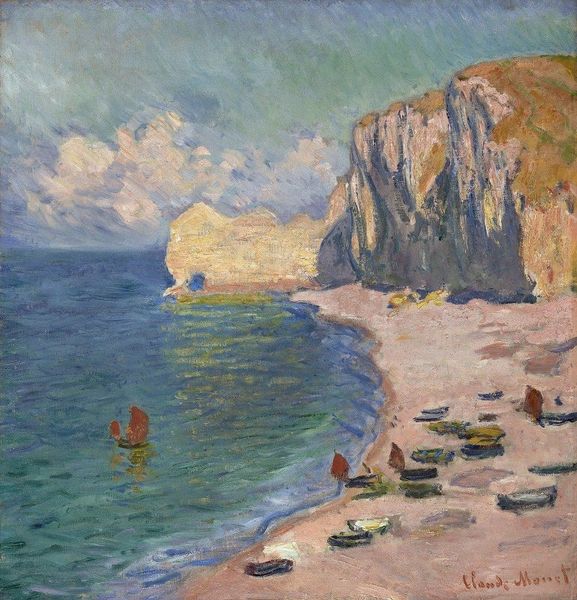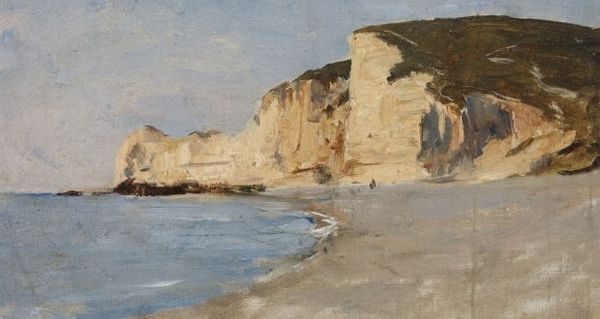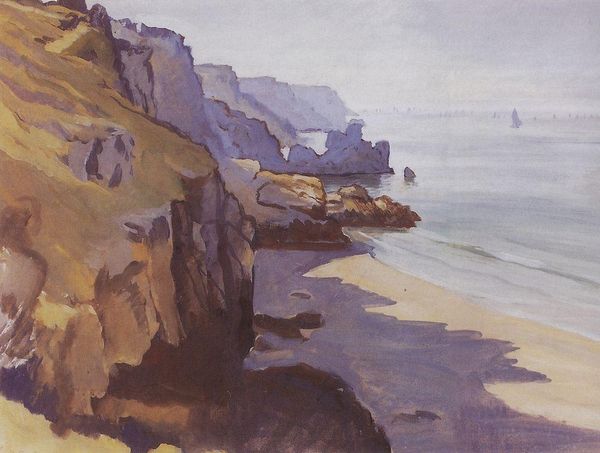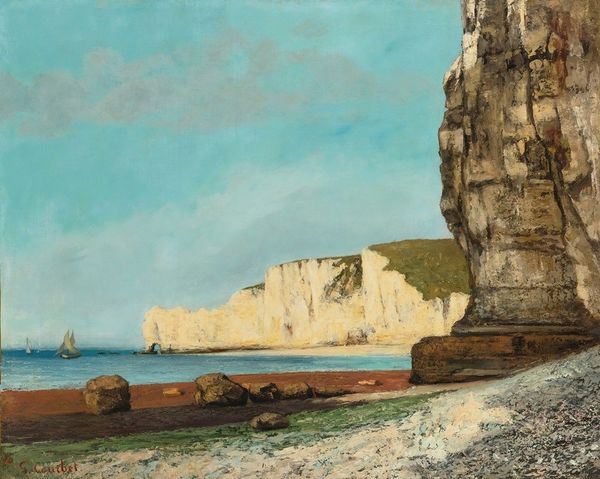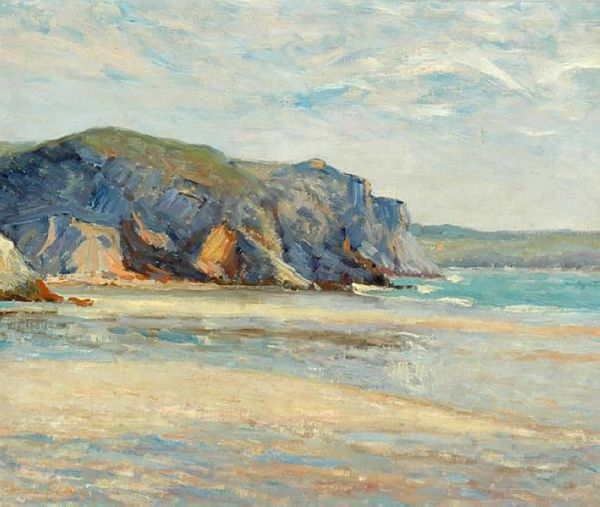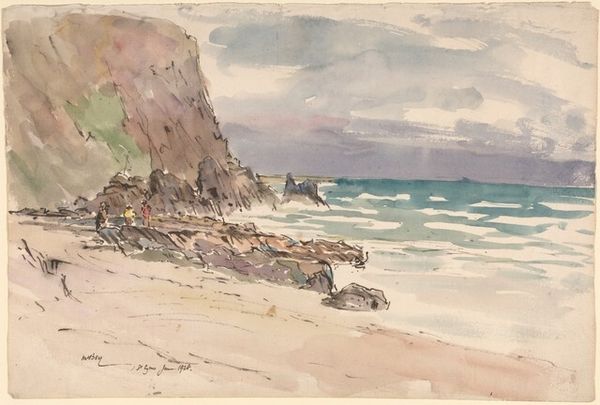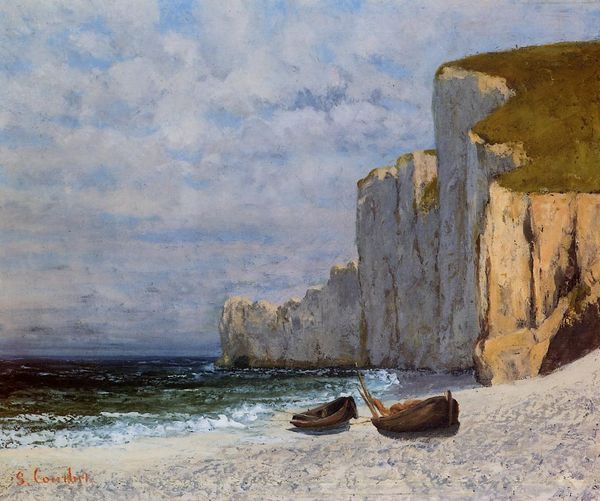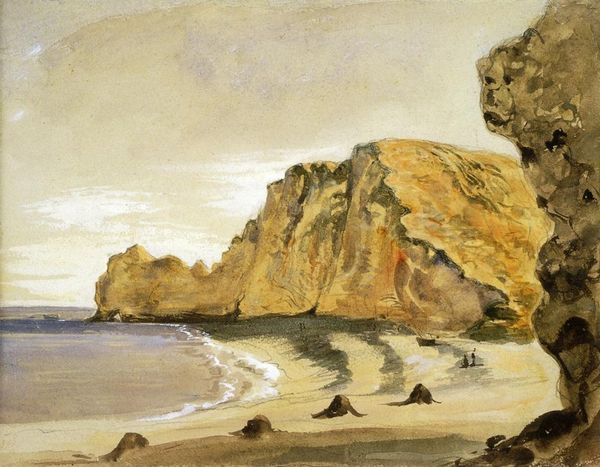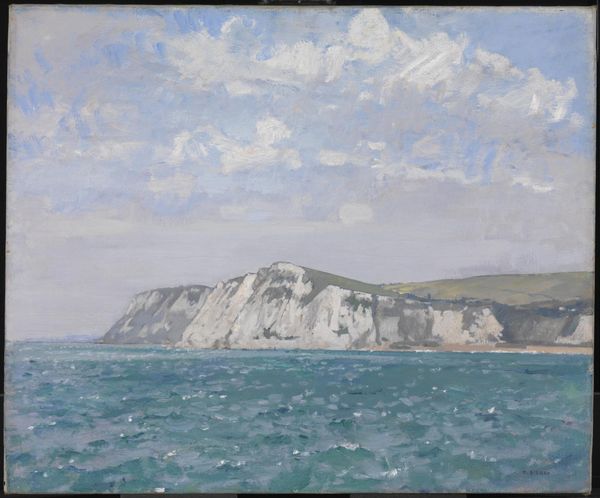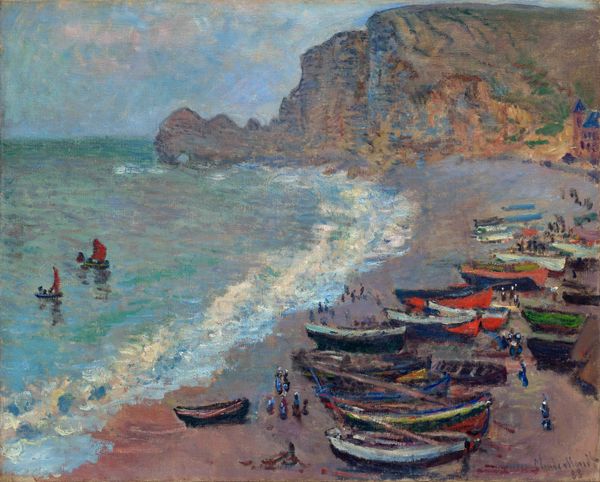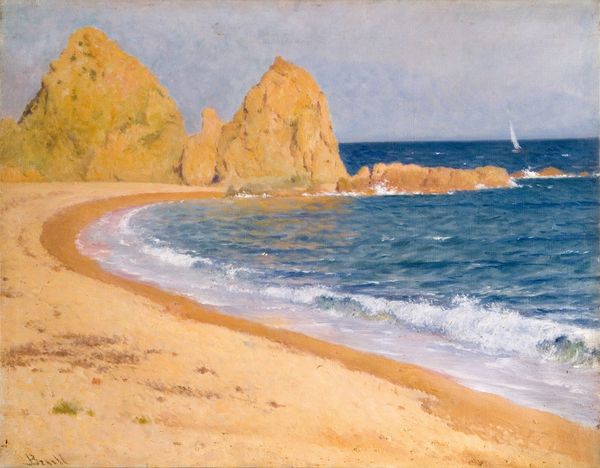
Copyright: Public domain US
Curator: We are standing before "Falaises D'Aval", a 1920 oil painting by Henri Matisse. What are your first thoughts about it? Editor: The starkness hits me first—those imposing cliffs, rendered almost monumentally. Then the sea, so flat and uninviting. It evokes a sense of loneliness, almost. Curator: It's interesting you say that. Matisse, around this time, was engaging with landscape in a new way, almost as a retreat from the more chaotic scenes of city life and its rapidly changing industrial conditions. This location, the cliffs of Étretat, became a recurrent motif. It’s almost as if he reduces the forms to their most essential and raw components, right? Editor: Absolutely. You see the raw application of paint, the visible brushstrokes, it's a sort of plein-air style of engagement where the materials feel integral. I almost get a feel of what the conditions might have been for Matisse on the beach, like the scene came together quickly. Did many people witness its construction, or was he relatively solitary? Curator: It’s challenging to say for certain but his methodology was that of being outdoors for hours during different phases. The materiality suggests the latter, yet the social context hints to the former. And that dichotomy might have an effect on your interpretation. Editor: Perhaps the painting almost yearns for the same touch Matisse gave the women he painted - but gives to nature instead. Look at the faces in the sand! Those three figures feel unresolved. Curator: That's a fantastic reading. Their inclusion draws our focus not only to the landscape’s majesty but also the daily lives and economies intersecting at that coastline— the material exchanges present from land to water, a social history written across geography. Editor: It does make you question the scale too - it almost doesn't quite come across without people. These figures aren't even as imposing as the beams to their right... but you have brought my eye down there! In a way it gives an almost tactile quality to the landscape. It feels heavy, doesn't it? Curator: I hadn’t thought of that exactly. For me, what speaks loudest in this artwork, aside from the cliff's obvious weight and importance, are the boats being pulled along it's shores, the daily activity to engage with this environment for living. Editor: Well, you've certainly given me a renewed respect for those silent masses that frame our interactions. This was fun! Curator: Likewise! A welcome discussion.
Comments
No comments
Be the first to comment and join the conversation on the ultimate creative platform.

